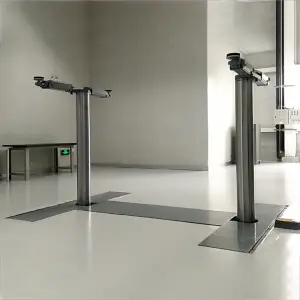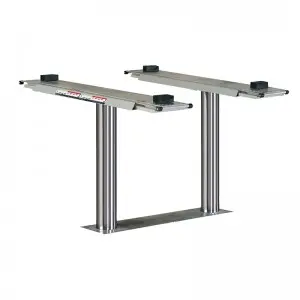****

Understanding the AC Series: How It Works, Its Applications, and the Future of Alternating Current Technology
Alternating Current (AC) technology is one of the most significant advancements in electrical engineering. The AC series, a concept that encompasses various aspects of alternating current, plays a crucial role in power distribution, electrical appliances, and modern electrical systems. This article delves into the intricacies of the AC series, including its principles, applications, and future trends in technology.

Understanding the AC Series: How It Works, Its Applications, and the Future of Alternating Current Technology
The Basics of AC
Alternating current is an electric current that reverses direction periodically. Unlike direct current (DC), which flows in one direction, AC changes its flow direction, typically many times a second. The frequency of this reversal is measured in Hertz (Hz). In most parts of the world, the standard frequency is 50 or 60 Hz. AC is favored for power distribution because it is more efficient for transmitting electricity over long distances.
The AC Series
The AC series refers to different characteristics and properties associated with alternating current. This includes voltage (the pressure that pushes electric current), current (the flow of electric charge), frequency, and phase angle. Understanding these characteristics is essential for engineers and technicians working with AC systems.
1. **Voltage and Current**: In an AC system, voltage and current can either be in phase or out of phase. When both are in phase, the system operates at maximum efficiency. However, in many cases, current and voltage are not synchronized due to reactor or magnetic components, leading to phase differences. This phenomenon affects the power factor, a measure of how effectively the current is being converted into useful work. A low power factor indicates inefficiency and can increase electricity costs.
2. **Frequency**: Uniformity of frequency is critical when it comes to distributing electricity through the AC series. Different countries operate on different frequency standards. For instance, North America typically operates on a 60 Hz frequency, while most of Europe utilizes a 50 Hz frequency. Devices designed for a specific frequency can malfunction or become damaged if plugged into an outlet with a differing frequency.
3. **Phase Angle and Power Factor**: The phase angle is the degree to which voltage and current waveforms differ from one another. For sinusoidal AC signals, this deviation can be quantified. This difference is critical in systems with inductive or capacitive loads, as it affects the power factor. A good power factor is essential for reducing energy costs and ensuring the longevity of electrical equipment.

Understanding the AC Series: How It Works, Its Applications, and the Future of Alternating Current Technology
Applications of AC Systems
The applications of the AC series are extensive, spanning various industries and everyday life.
1. **Massive Power Distribution**: AC is primarily used in power distribution networks around the world. High voltage AC lines can transport electricity over long distances with minimal energy loss due to transmission losses being lower than their DC counterparts. The transformation to lower voltages, which is safer for use in homes and businesses, is also straightforward through transformers.
2. **Electrical Appliances**: Most household appliances, from refrigerators to air conditioners, operate using AC power. Designers must consider factors like voltage, current, and compatibility with the AC series in appliances to ensure safety and efficiency.
3. **Industrial Machinery**: Factories and industrial sites predominantly use AC motors due to their reliability and ease of control. Industries rely on these motors for everything from conveyor belts to pumps, providing them with the versatility required for various applications.
The Future of the AC Series
Advancements in technology and a growing emphasis on sustainability have encouraged researchers to explore innovations within the field of AC electricity. Key trends are emerging, suggesting a shift toward smarter grids and more efficient energy uses.
1. **Smart Grids**: The integration of digital technology into power systems allows for improved monitoring and management of electricity flow. Smart grids can optimize the efficiency of AC distribution networks, manage energy storage, and incorporate renewable energy sources more effectively.
2. **Energy Efficiency**: Engineers are constantly seeking ways to enhance energy efficiency in AC systems. This includes developing advanced materials for transformers, motors, and other electrical components that minimize energy losses.
3. **Renewable Integration**: The use of AC technology is crucial for integrating renewable energy sources. Wind and solar power generate DC, which must be converted to AC to be used in the grid. Innovations are being made to improve this process ensuring that renewable energy efficiently complements existing AC systems.
Conclusion
The AC series represents a vital foundation for electrical technology, influencing everything from how electricity is generated to how it is consumed. As we embrace technological advancements and move toward a more sustainable future, the AC series will undoubtedly continue to evolve, shaping the performance and efficiency of our electrical systems for years to come. Understanding this technology is essential not only for engineers and technicians but for anyone interacting with electrical technology in today’s world.car quick lift


